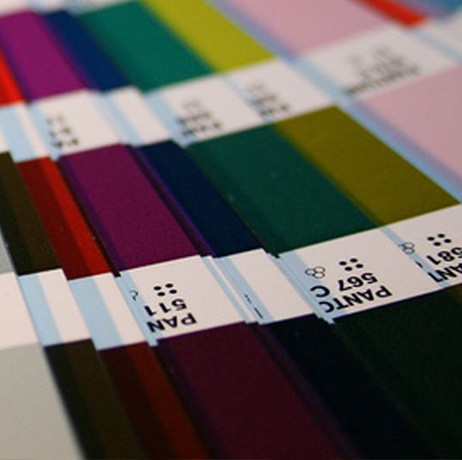


This is where you'll find printing and file supply guidelines, how-to guides, and general printing information that's interesting and useful to know. This page will continue to be updated depending on client requests; please contact us if there is anything not on this page that you would want to know. We like sharing our knowledge and are always eager to help.

We are presently accepting orders via phone, email, or in person to assess your project requirements. We quote the finest option for you, and once agreed, your order is handled by our creative staff.

If you supply a print-ready file, we prefer a press-quality PDF. Our art staff will assess your work and either prepare it for production or advise you on any changes required for printing.

Do you require assistance with your file? Our creative staff can help you get your file ready for publishing. We can start from scratch or work with an existing file. We create PDF proofs for our clients to evaluate and respond to through email or physical copy.
North American print sizes are generally based on an 8.5" x 11" sheet and include the following:
| Half Letter: 5½" x 8½" | Letter: 8½" x 11" |
| Legal: 8½" x 14" | Ledger: 11" x 17" |
| Standard Book sizes: |
| 8½" x 11" | 6" x 9" | 8" x 10" | 5½" x 8½" |
| Standard Catalog, Magazine and Booklet sizes: |
| 8½" x 11" | 5½" x 8½" |
| Standard Calendar sizes: |
| 8½" x 11" | 12" x 12" |
| Standard Presentation Folder size: |
| 9" x 12" |
In most cases, a Press Ready PDF can go straight to print; however, we verify all incoming files before output and will identify any difficulties that arise, requesting an updated file or providing you with a quote to address the errors. Please let us know when placing your order if you would like to see a proof before printing.
The Pantone Matching System (PMS) is a color reference tool that is largely used in the printing business. Colors are identified by an independent name or number. PMS colors have a greater tonal range than CMYK colors and are used to precisely match colors while maintaining consistency from job to project.
Cyan, Magenta, Yellow, and Black (called "Key" in ancient printing jargon) are the fundamental print colors used for print communication such as business cards and brochures. RGB stands for the basic colors of light, Red, Green, and Blue, and is utilized in digital communication such as websites and television (anything you see on a screen). Colors are produced differently by printers and monitors, and RGB offers a larger color gamut than CMYK. Designs intended for print should be created in CMYK mode for the best results.
Creep is the movement of paper that occurs as the pages of a document are folded inside each other. Creep occurs because the trim margins of pages in saddle-stitched books' inner signatures are narrower than pages in the outer signatures. Depending on the number of pages, you may need to change margins to account for creep so that the outside text on the inner pages is not cut off when creating a book for saddle-stitching.

The print that extends around the perimeter of your document and will be trimmed off during manufacturing is referred to as bleed. It is required for any print products that feature any picture or color that extends to the page's edge. We want a bleed of at least ⅛" on all edges to allow for movement when printing and trimming. Providing a file without bleed may result in white lines after trimming (and don't forget to add your crop/trim marks!).
Download our file supply guideline PDF here for more information.
Offset printing involves transferring ink from a metal plate to a rubber blanket, which is subsequently rolled onto paper. Due to the setup expenditures, it is more cost effective when bigger numbers are required. Offset printing produces accurate color reproduction as well as clear, clean, professional-looking prints on a wide range of paper kinds.
| Offset Pro's: |
| Lower unit cost for larger quantity runs. |
| Superior image quality that is reliable. |
| Clean, distinct type and images without streaks or spots. |
| Larger variety of paper size and weight. |
| Offset Con's: |
| Higher cost for low-volume jobs. |
| Longer timetable with setup and drying times. |
Plates are not required for digital printing. The machine applies ink (or toner) directly to the paper. When various designs are required, such as in print projects with variable data (numbering, barcodes, addresses) or low volume works, this is the best choice.
| Digital Pro's: |
| Faster turnaround time. |
| Cheaper for low-volume jobs. |
| Each print is identical. |
| Digital Con's: |
| Fewer paper options and weight to choose from. |
| Higher cost for large-volume jobs. |
| Prints can have a toner shine. |
| Less color fidelity as digital cannot match some PMS colors exactly. |